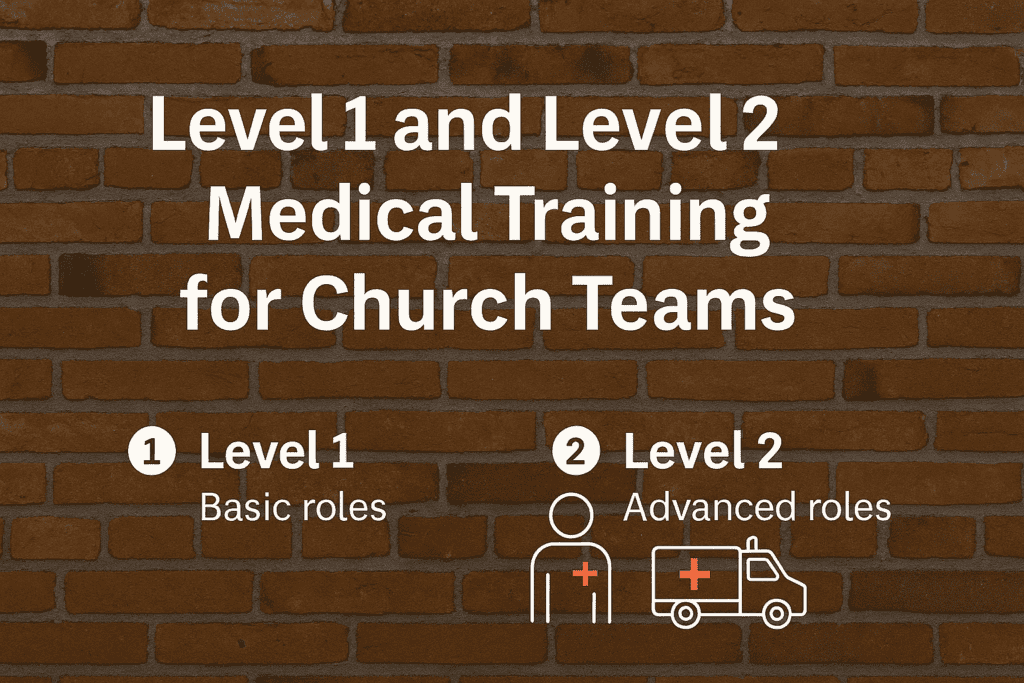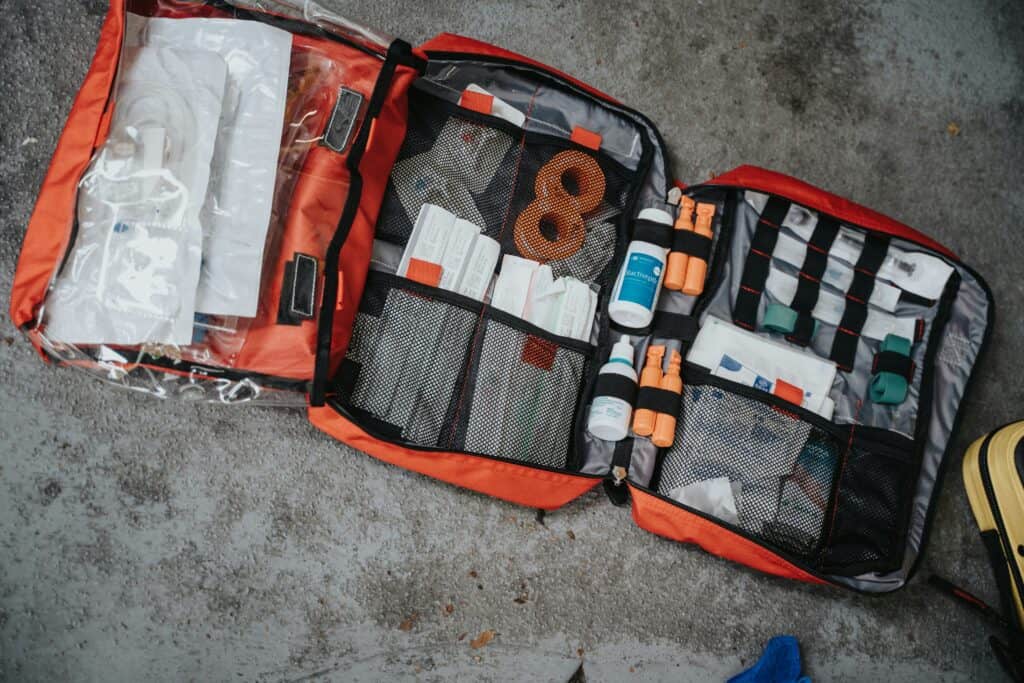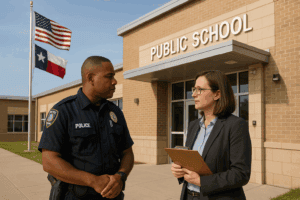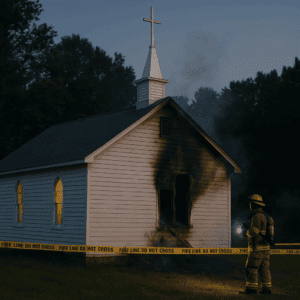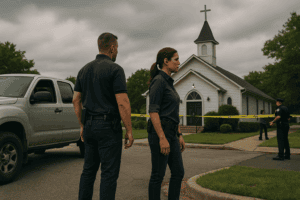When someone collapses in your sanctuary or suffers a stroke during worship, who helps first? And do they know what to do?
Most churches haven’t defined roles or levels of training. The result? Confusion, delay, and risk.
Here’s how to fix it.
Why Tiered Training Works
Not everyone on your safety or medical team needs the same level of training. Some are EMTs, some are nurses, and others just want to help.
Defining clear levels makes training more effective, more efficient, and easier to manage.
We recommend two simple tiers:
Level 1: General Responders
Who it’s for: Volunteers with basic skills (CPR-certified, First Aid trained, or willing to be).
Purpose: These responders are your first layer. They stabilize, communicate, and support. They’re not doing advanced interventions, but they’re trained, ready, and confident.
Core skills:
- Recognize emergency symptoms (stroke, cardiac arrest, seizures)
- Perform CPR and use an AED
- Stop bleeding (tourniquet and direct pressure)
- Assist with asthma, allergic reactions, diabetic episodes
- Triage and call EMS with clear info
Tools:
- Access to trauma kits
- Know location of AEDs
- Use checklists, like those found in our Church Medical SOP Bundle
Training frequency: Every 6–12 months with refreshers during drills
Level 2: Advanced Care Team
Who it’s for: Licensed medical professionals (nurses, EMTs, paramedics, MDs)
Purpose: These responders go beyond the basics. They lead the medical response, assess patients, and decide next steps until EMS arrives.
Core skills:
- Manage airway and breathing issues
- Perform patient assessments (neuro checks, vitals)
- Guide untrained helpers
- Document the response properly
- Support mental health or behavioral emergencies
Tools:
- Full trauma kit access
- Oxygen (if permitted by state laws)
- Advanced forms like the Medical Incident Report
Training frequency: Initial onboarding + semiannual review
Don’t Skip Documentation
No matter the level, responders should know how to:
- Fill out a medical incident report
- Record what was done and by whom
- Secure the report and notify church leadership
Documentation protects everyone and helps you improve.
Use templates from our Church Medical SOP Bundle to simplify the process.
Common Mistakes to Avoid
- Only training licensed professionals. This leaves gaps during real incidents.
- Skipping regular drills. People forget. Skills fade.
- Lack of role clarity. Who does what? When?
Avoid these by defining levels and training accordingly.
Build a Church Medical Team That’s Ready
Start simple:
- Designate Level 1 and Level 2 roles.
- Use a consistent training calendar.
- Use templates and checklists.
Grab the Church Medical SOP Bundle to get started today.
No fluff. Just a clear, church-ready plan.

